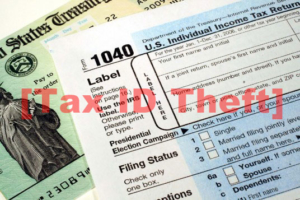As you head into the holiday season, one of the best steps you can take to protect your bank account is to eliminate the use of your debit card. While delivering a keynote speech in Washington DC last week, someone asked me if I could name ten times when you should NOT use a debit card. I replied, “It’s a trick question because the answer is NEVER!” I seriously do feel that way, but I know there are people who either need to or prefer to use a debit card rather than a credit card or cash, so I want you to be informed about how to use it wisely.
First, make sure you understand the difference between a credit and debit card. While they appear identical and can often be used interchangeably, remember that a debit card is a direct line to your bank account. If a thief gets ahold of your debit card information, they essentially have access to your account. One of the biggest differences comes to light when fraud occurs. Credit card users can simply decline the charges and not pay the bill. Debit card fraud comes straight out of your bank account and is much harder to fight or reclaim the money that as been debited. In the meantime, while you prove it was fraud, you’re out the cash.
Here is a Top Ten List of times to choose credit over debit.
10. Booking future travel
If you book your travel with a debit card, they debit your account immediately,. So if you’re buying travel or making a reservation that you won’t use for several months, you’ll be out the money immediately. Also consider that many large hotels have suffered data breaches.
9. Hotels
Many hotels follow the practice of using your debit card to place a hold on your money (sometimes hundreds of dollars) to make sure you don’t run up a long distance bill, empty the mini bar or trash the room. The practice is almost unnoticeable if you’re using credit, but can be problematic if you’re using a debit card and have just enough in the account to cover what you need. Be sure to ask about their “holding” policy if you are using a debit card.
8. Expensive purchases
This one is simple. If something goes wrong with the merchandise or the purchase, a credit card offers rights to dispute and stop payments much easier than a debit card. You have a much shorter window for reporting and resolving an issue and may even be responsible for all charges if you wait too long.
7. Rental or security deposits.
Say you want to rent a car or borrow a Bobcat from your local home improvement store. Remember that when you use a debit card to put down a deposit, that money is temporarily unavailable to you. Of course, you’ll get the money back when you return the car or equipment, so this is no big deal if you have the money to spare until that time. But with a credit card, the money is just “frozen” and not actually charged so you won’t ever notice it’s gone.
6. Regular/recurring payments
You’ve heard about someone who quit a gym or discontinued a magazine subscription only to find that they kept getting billed. If you used a debit card for those payments, they’ll just keep coming right out of your bank account. (Using a credit card is also a good way to ensure you don’t forget to make that monthly debit in your check register!)
5. Wi-Fi hot spots
Never use your debit card for an online purchase while at a coffee shop or other business that offers free wi-fi access. Many of those businesses have unsecured wireless connections, so it’s much easier for hackers and scammers to log on and steal your data.
4. Restaurants
Anytime the card leaves your sight, you should NOT use your debit card. The waiter coming to your table has alone time with your card, giving them the opportunity to copy your card information.
This also applies to ordering food for delivery. Restaurants that deliver tend to keep customer payment information on file in order to make future orders more convenient.
Another problem with using a debit card at restaurants is that some establishments will approve the card for more than your purchase amount because, presumably, you intend to leave a tip. So the amount of money frozen for the transaction could be quite a bit more than the amount of your tab. And it could be a few days before you get the cash back in your account.
3. Outdoor ATMs
Outdoor ATM machines provide the perfect opportunity for thieves to skim users’ debit cards. Skimming is the practice of capturing a bank customer’s card information by running it through a machine that reads the card’s magnetic strip. Criminals place these machines over the real card slots at ATMs and other card terminals. If the public has access to it, so do data criminals. Use the ATM just inside the bank where it is under constant surveillance. And no matter what, look for devices or cameras on the ATM machine that aren’t normally there.
2. Gas stations
Every gas pump asks, “Credit or Debit?” these days. Don’t choose the debit option! Go inside and pay cash if you choose not to use your credit card! There are three reasons. One, it’s fairly easy for a thief to insert a skimmer and then sit nearby with a laptop accessing your information. Even if the thief doesn’t manage to get your debit card personal identification number, or PIN, from such a device, he still may be able to duplicate the card’s magnetic strip and use it for “sign and swipe” Visa or MasterCard transactions.
Thieves can also sit nearby using small cameras to capture footage of debit card users entering their PINs. Finally, similar to the hotel example above, your debit card may be used to place a hold for an amount larger than your actual purchase. So, even though you only bought $10 in gas, you could have a temporary bank hold for $50 to $100, says Susan Tiffany, director of consumer periodicals for the Credit Union National Association.
1. Online
Using you debit card online is like asking for your bank account to be emptied. There is just way too much potential for hacking at many different points in a transaction. It could occur due to malware on the computer, someone could be “eavesdropping” via a wireless network, or it could happen once in the hands of the merchant due to a data breach. If you have a problem with the purchase or your debit card number is stolen, it’s a huge hassle to get the money restored to your account and make your card number safe and secure again.
Keep it simple and just always use a credit card. I realize that it is easier to spend more money when it’s not coming directly out of your account, but it’s better to resist the temptation to spend for the added security provided.
John Sileo is an author and highly engaging keynote speaker on internet privacy, identity theft and technology security. He is CEO of The Sileo Group, which helps organizations to protect the privacy that drives their profitability. His recent engagements include presentations at The Pentagon, Visa, Homeland Security and Northrop Grumman as well as media appearances on 60 Minutes, Anderson Cooper and Fox Business. Contact him directly on 800.258.8076.


 “Tax Time ID Theft – Part 1″ href=”https://sileo.com/top-tips-for-tax-time-security-peace-of-mind-part-1/”>Part 1 – Tax Preparers |
“Tax Time ID Theft – Part 1″ href=”https://sileo.com/top-tips-for-tax-time-security-peace-of-mind-part-1/”>Part 1 – Tax Preparers |  Tax Time Identity Theft:
Tax Time Identity Theft: 